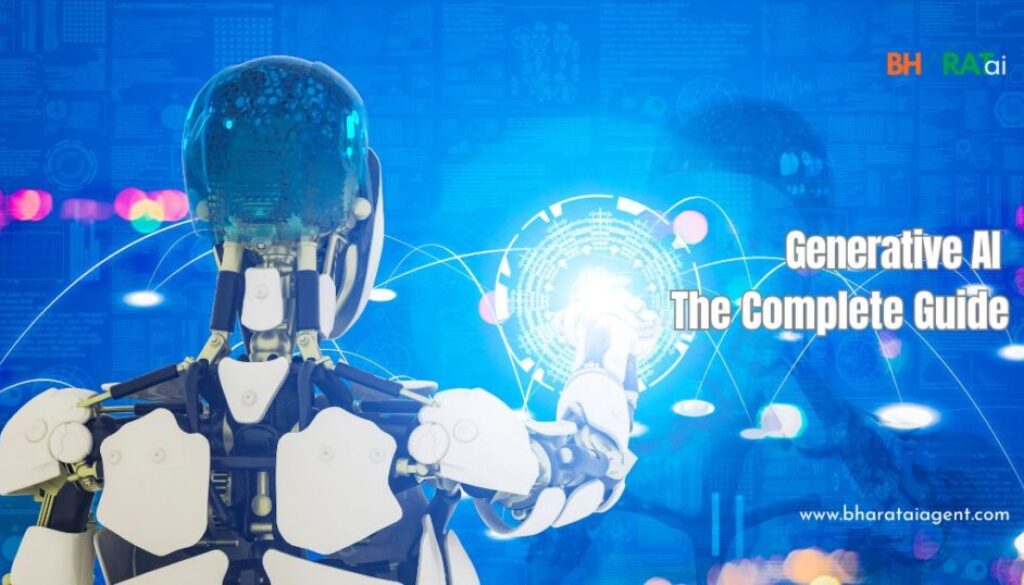Generative AI in 2025: A Complete Guide to Innovations, Applications & Future Trends
Introduction
Generative AI has become one of the most transformative technologies worldwide. It’s revolutionizing how content is created, from hyper-realistic images and videos to highly personalized marketing and advanced conversational systems. Understanding what Generative AI is, its latest developments, real-world applications, ethical considerations, and future trends is crucial for individuals and businesses alike.
In this authoritative guide, clearly structured to align with current Google SGE guidelines and user intent, you will learn:
-
What exactly Generative AI is in 2025
-
Core concepts and types of Generative AI
-
Recent advancements & breakthroughs (as of March 2025)
-
Real-world applications across industries
-
Benefits and challenges of Generative AI
-
Future trends and predictions
-
Common FAQs answered directly
What is Generative AI?
Generative AI refers to advanced artificial intelligence systems capable of generating new and original content, such as text, images, audio, and video, from minimal prompts. Powered by deep learning and neural networks, Generative AI tools (like GPT-4 Turbo, Google Gemini 1.5, and Midjourney Video) create realistic, coherent, and context-aware outputs quickly and effectively.
Core Concepts & Types of Generative AI
Key Generative AI methodologies and models include:
✅ Generative Adversarial Networks (GANs)
-
Two neural networks competing to create realistic images or videos.
-
Applications: Image generation (Midjourney), video synthesis (Runway AI), deepfake detection.
✅ Transformer-based Language Models
-
Deep learning models trained on extensive text data, enabling realistic text generation.
-
Applications: Conversational AI, content writing, summarization (GPT-4 Turbo, Gemini 1.5).
✅ Diffusion Models
-
Generate high-quality images from textual descriptions by gradually improving outputs.
-
Applications: AI-generated art, creative advertising, personalized visual content.
✅ Neural Radiance Fields (NeRFs)
-
Generate photorealistic 3D scenes from limited 2D images.
-
Applications: Virtual Reality (VR), gaming environments, and digital media production.
Recent Innovations & Developments in Generative AI
Recent breakthroughs include:
-
GPT-4 Turbo & Gemini 1.5: Enhanced multimodal AI capabilities (text, audio, visual), enabling highly interactive, contextually aware conversational agents.
-
Hyper-realistic Video Generation: Platforms like Runway AI and Midjourney Video achieving unprecedented realism and creativity in AI-generated videos.
-
Personalized Generative Marketing: Brands using Generative AI to instantly create highly personalized marketing and advertising content for individual customers.
-
Emotionally Intelligent Generative AI: AI models capable of generating empathetic, emotionally resonant interactions for customer service and mental health support.
-
Generative AI at the Edge: Lightweight Generative AI models operating directly on smartphones and IoT devices, ensuring faster, secure, and privacy-focused experiences.
Real-World Applications of Generative AI
Generative AI is significantly impacting various industries:
✅ Content Creation & Media
-
Automated copywriting, blogs, social media posts, and scripts.
-
High-quality AI-generated images, videos, and animations.
✅ Healthcare
-
Generative models supporting drug discovery and medical research.
-
Personalized health content and patient communication.
✅ Marketing & Advertising
-
Instant generation of tailored marketing content, ads, and customer interactions.
-
AI-generated influencer and virtual ambassador content.
✅ Entertainment & Gaming
-
Immersive virtual worlds, environments, and character creation.
-
AI-driven personalized storytelling and interactive media.
✅ Education & E-learning
-
Personalized, AI-generated educational content.
-
Intelligent tutors providing unique, tailored learning experiences.
Benefits of Generative AI
Generative AI delivers clear advantages:
-
Rapid Content Generation: Quickly create high-quality, original content at scale.
-
Cost-Efficiency: Significantly reduce the time and resources required for content production.
-
Creativity & Innovation: Expand creative possibilities with innovative AI-generated ideas.
-
Personalization: Easily create highly tailored experiences for individual users or customers.
-
Improved Productivity: Automate repetitive creative tasks, allowing teams to focus on strategic, high-value activities.
Challenges & Ethical Concerns of Generative AI
Generative AI presents several critical concerns:
-
Data Privacy: Ensuring responsible handling of personal data.
-
Misinformation & Deepfakes: Preventing misuse in creating realistic false content.
-
Intellectual Property Rights: Clarifying legal ownership of AI-generated content.
-
Bias & Fairness: Mitigating biases present in AI training datasets.
Future Trends in Generative AI
Key emerging trends include:
-
Generative AI in the Metaverse: Increasingly realistic and interactive AI-driven virtual experiences.
-
Quantum-enhanced Generative AI: Integration with quantum computing for faster, more complex AI generation tasks.
-
Real-time Personalized Generative Experiences: Instant, highly personalized AI-generated interactions and experiences.
-
Emotionally Intelligent AI Interactions: Expanded use of AI capable of nuanced, empathetic communication.
FAQs: Generative AI
Q1: What exactly is Generative AI?
Generative AI refers to advanced AI systems capable of creating new, original, and realistic content (text, images, videos, audio) autonomously from simple prompts or descriptions.
Q2: How accurate and realistic is Generative AI content in 2025?
As of 2025, Generative AI produces highly realistic and accurate outputs. However, quality varies depending on the model, dataset quality, and prompt specificity.
Q3: What are some popular Generative AI tools in 2025?
Popular Generative AI tools include GPT-4 Turbo, Google Gemini 1.5, Midjourney (for images), Runway AI (video generation), and DALL-E 3 (visual creativity).
Q4: Is Generative AI affordable and accessible for small businesses?
Yes, by 2025, Generative AI solutions have become affordable, scalable, and user-friendly, allowing businesses of all sizes to adopt and benefit from this technology.
Q5: What are common daily-life examples of Generative AI?
Examples include AI-generated social media content, automated writing assistants, realistic virtual characters in games, and personalized content recommendations.
Conclusion
Generative AI has emerged as a powerful force shaping digital experiences, creative industries, and business strategies. Understanding its capabilities, practical applications, and ethical considerations empowers individuals and businesses to responsibly and effectively leverage this transformative technology.
#GenerativeAI #AI2025 #AIContentCreation #GPT4Turbo #Midjourney #AIInnovation #FutureTech #TechTrends #AIArt #QuantumAI #ConversationalAI #AIapplications
Generative AI 2025
GPT-4 Turbo AI
AI-generated Content Examples
Generative AI Applications
Generative AI Tools
Ethical Concerns in Generative AI
AI Creative Tools
Generative AI Benefits
AI Personalization
Future Generative AI Trends
What is Generative AI
Generative AI vs Traditional AI
AI-powered Content Generation
Generative AI in Healthcare
Generative AI for Marketing
Deepfakes and AI
AI Image and Video Creation
Quantum Computing in Generative AI
AI Personalization Examples
Ethical AI Content Creation




